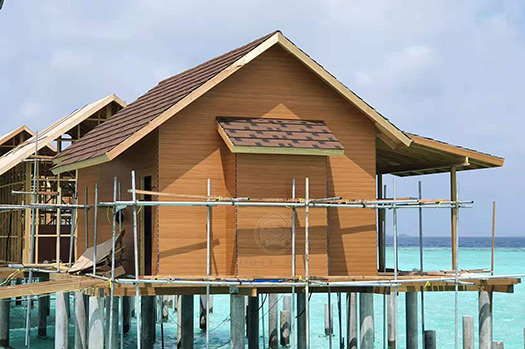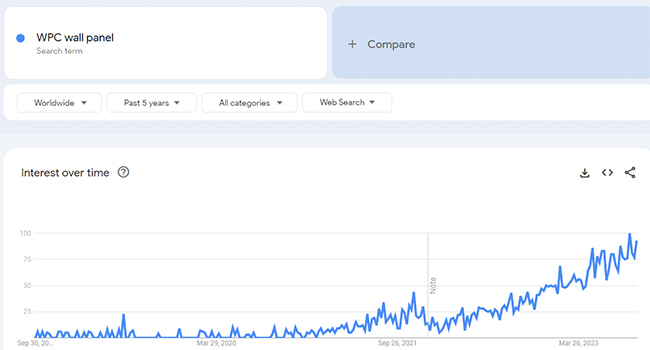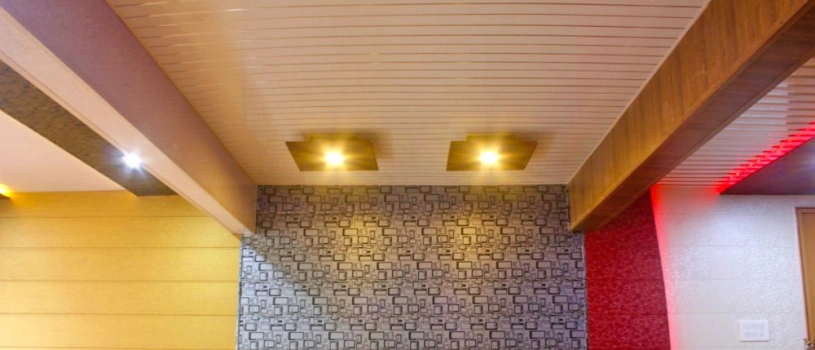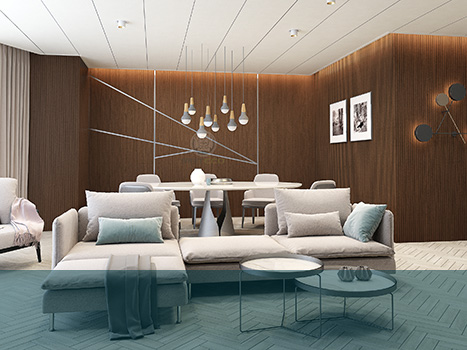Composite Exterior Wall Panels: An Insider's Guide for Distributors
In this comprehensive resource, we'll explore key aspects of the composite wall panel industry, focusing on WPC wall panels. Topics covered include an introduction to composite wall panels, types, benefits, market trends, supplier selection, quality control, installation, pricing, and marketing. Whether you're a seasoned distributor or just getting started, this guide will help you navigate the world of composite exterior wall panels with confidence.
What is composite exterior wall?
Composite exterior wall panels are a remarkable innovation in the construction industry, revolutionizing the way buildings are designed and constructed. At their core, these panels are engineered to combine the best attributes of multiple materials, resulting in a product that boasts exceptional strength, insulation properties, and aesthetic versatility. These panels are typically constructed in layers, with each layer contributing to their overall performance. Common components often include a weather-resistant outer layer, a core material for structural support, and an inner layer that adds insulation properties. The combination of these elements creates a wall panel that is not only durable but also energy-efficient, making it a highly sought-after choice for modern building projects.
One of the most prominent materials used in composite exterior wall panels is Wood-Plastic Composite (WPC), which is renowned for its exceptional durability and sustainability. WPC panels combine wood fibers with thermoplastic polymers to create a material that mimics the appearance of wood while offering the benefits of plastic, such as resistance to moisture, termites, and rot. This blend of materials results in panels that are not only aesthetically pleasing but also low-maintenance, making them a practical choice for both residential and commercial applications. Understanding the intricacies of composite exterior wall panels is pivotal for distributors, as it allows them to communicate effectively with clients, showcase the advantages of these panels, and cater to the diverse needs of builders and property owners.

House built with wood plastic composite siding by the sea
Types of Composite Exterior Wall Panels:
When it comes to composite exterior wall panels, there is a rich tapestry of options available to distributors and builders, each designed to meet distinct project requirements and aesthetic preferences. One of the most popular and versatile choices is Wood-Plastic Composite (WPC) panels. These panels seamlessly blend wood fibers with thermoplastic polymers, resulting in a material that mirrors the natural beauty of the wood while offering durability, resistance to moisture, termites, and rot, and low maintenance associated with plastic. WPC panels come in an array of textures and finishes, from classic wood grain patterns to contemporary sleek surfaces, making them suitable for a wide spectrum of architectural styles. They have gained immense popularity in residential and commercial projects, providing an eco-friendly alternative to traditional wood siding while offering design flexibility.
Fiber cement composite panels are another noteworthy category in the composite wall panel market. These panels are composed of cement, wood fibers, and various additives, creating a robust material that can withstand the harshest weather conditions, impacts, and pests. One of the key features of fiber cement panels is their ability to mimic the appearance of natural materials such as wood or stone, offering architects and builders the freedom to achieve both modern and traditional design aesthetics. Their capacity to withstand moisture and the test of time makes them a preferred choice in areas prone to harsh climates.
Aluminum composite panels represent yet another compelling option. These panels consist of two aluminum sheets sandwiching a core material, resulting in a material that excels in rigidity and versatility. Aluminum composite panels are remarkably lightweight, making them easy to handle during installation, while their sleek, metallic appearance adds a touch of modernity to architectural designs. These panels are often used in commercial and high-rise buildings, where a balance between aesthetics and functionality is essential.
Benefits of WPC Wall Panels:
Wood-plastic composite (WPC) wall panels have gained immense popularity in the construction industry for a multitude of compelling reasons. First and foremost, WPC panels offer exceptional durability. They are engineered to withstand the rigors of outdoor exposure, making them resistant to moisture, termites, rot, and decay. This durability ensures that WPC wall panels have a significantly longer lifespan compared to traditional wood siding, reducing maintenance costs and preserving the integrity of the building's exterior over time. Distributors and builders can confidently recommend WPC panels to customers, knowing that they will provide long-lasting value.

WPC Cladding for Home
WPC wall panels are celebrated for their low maintenance requirements. Unlike natural wood, which demands regular staining, painting, or sealing, WPC panels retain their original appearance and structural integrity with minimal upkeep. This feature not only saves property owners time and effort but also reduces the long-term cost of maintaining the building's exterior. Additionally, the ease of cleaning and resistance to staining make WPC panels an ideal choice for areas prone to heavy foot traffic or exposure to the elements.
One of the most notable benefits of WPC wall panels is their eco-friendliness. These panels are manufactured using recycled wood fibers and thermoplastic polymers, reducing the demand for virgin timber and plastics. By choosing WPC panels, distributors and builders contribute to sustainable building practices and reduce the environmental footprint of construction projects. The eco-friendly nature of WPC panels resonates with environmentally conscious property owners and is an essential selling point in today's green building market.
Overall, the benefits of WPC wall panels make them a highly attractive choice for distributors and builders alike. Their durability, low maintenance requirements, and eco-friendliness not only enhance the value of properties but also align with the growing demand for sustainable construction materials. Distributors can confidently offer WPC panels as a reliable and eco-conscious option for customers seeking both functional and environmentally responsible exterior solutions.
Composite Exterior Wall Panels Market Trends and Demand
To succeed as a distributor in the composite exterior wall panels industry, staying attuned to current market trends and understanding the demand dynamics is crucial. One significant trend driving the market is the increasing focus on sustainability. As environmental awareness grows, builders and property owners are seeking materials that are not only durable but also eco-friendly. Composite exterior wall panels, especially those made from recycled and sustainable materials like Wood-Plastic Composite (WPC), are in high demand due to their ability to fulfill both criteria. Distributors should consider emphasizing the environmental benefits of these panels to align with this growing trend.

WPC Wall Panel Market Trend
Data Sources: https://trends.google.com/trends/explore?date=today%205-y&q=WPC%20wall%20panel&hl=en
Another noteworthy trend is the shift towards modern and contemporary architectural designs. With more architects and builders opting for sleek and clean aesthetics, composite wall panels are gaining popularity for their ability to provide a smooth, uniform surface that complements these design choices. Distributors should be prepared to offer a variety of finishes and textures that cater to these preferences, providing architects and builders with the flexibility they need to execute their designs effectively.
Additionally, the demand for energy-efficient building materials is on the rise. Composite exterior wall panels, with their excellent insulation properties, contribute to improved energy efficiency in structures. This trend is particularly significant in regions with extreme weather conditions, where property owners are increasingly interested in reducing heating and cooling costs. Distributors should emphasize the energy-saving benefits of these panels to tap into this growing demand and provide customers with solutions that align with their cost and eco-conscious objectives. By staying informed about these trends and understanding the evolving demands of the market, distributors can position themselves as industry leaders and offer products that cater to the changing needs of builders and property owners.
Selecting the right WPC factory:
Choosing the right suppliers is a critical decision for distributors in the composite exterior wall panels industry. The quality, reliability, and consistency of your product offerings depend heavily on your supplier's capabilities and commitment to excellence.
To ensure that you can consistently provide your customers with top-quality Wood-Plastic Composite (WPC) wall panels, it's imperative to partner with suppliers who share your commitment to delivering advanced, premium, and eco-friendly products. Look for manufacturers and suppliers who invest in cutting-edge technology and adhere to stringent quality control processes.
MATECO is one of the leading composite wood cladding manufacturer and supplier in China. Our commitment is to provide advanced, premium, eco-friendly composite exterior wall panels to global customers.
If you are looking for a WPC manufacturer, MATECO WPC will be your best choice.
Website: https://www.matecowpc.com
WhatsApp: +86-13380085620
Email: info@matecowpc.com
















